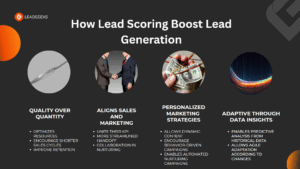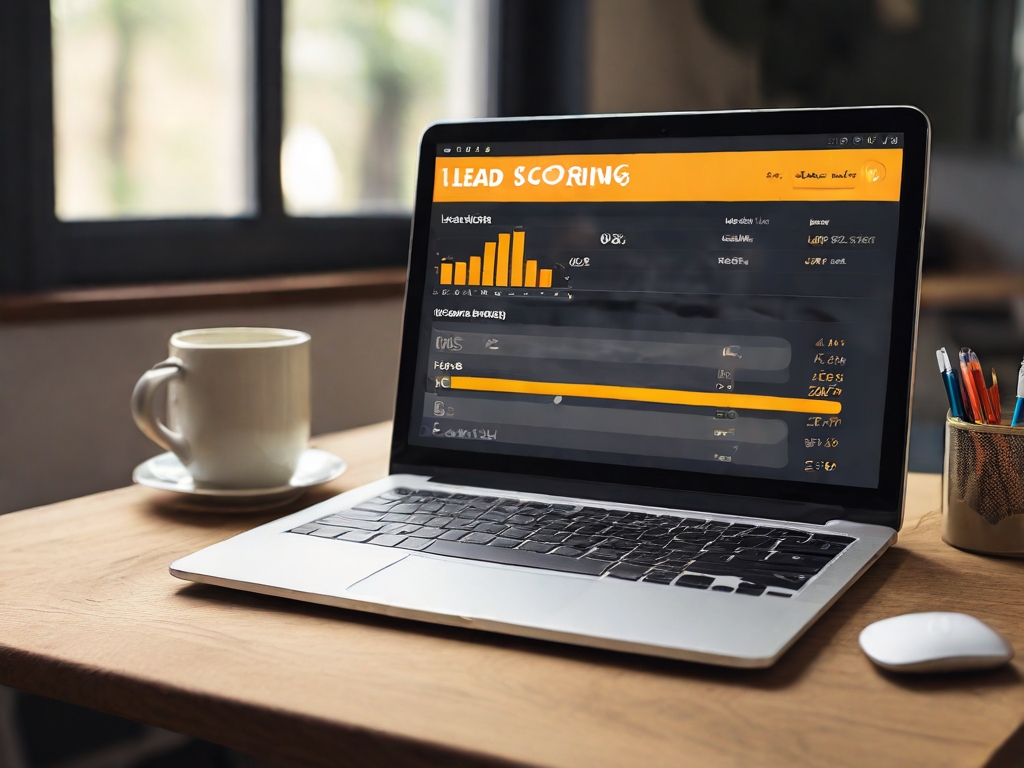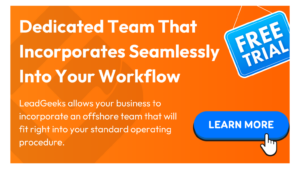In the intricate world of B2B marketing and sales, knowing which prospects are most likely to convert is crucial. Lead generation is more than just gathering a large number of leads—it’s about pinpointing those with the highest potential for your business. This is where lead scoring comes into play. Lead scoring acts as a guide, helping you in prioritizing leads that most likely will make a purchase. Let’s dive into what this approach is and explore five ways it can enhance your B2B lead generation strategy.
What is Lead Scoring?
Lead scoring is a method where prospects are ranked based on their perceived value to the organization. By assigning points based on factors like demographic info, company size, job role, online behavior, and engagement level, businesses can objectively assess which leads are most likely to become customers. This strategic process helps prioritize efforts, ensuring time and resources are invested in nurturing leads most likely to convert.
How Lead Scoring Can Transform B2B Lead Generation

Focus on Quality Over Quantity
In B2B, the sales cycles can be long and complex. This approach helps you shift focus from generating a large volume of leads to nurturing high-quality ones. By prioritizing quality, you can allocate resources more efficiently, leading to higher conversion rates and a more streamlined sales process.
Key Benefit:
Resource Optimization
Instead of spending your resources the same way to all of your leads, lead scoring allows you to focus on a select few. Marketing and sales efforts will be concentrated on engaging and converting high-value prospects; prospect that’s most likely to convert.
Shorter Sales Cycles
Aside from having leads concentrated on the more high-value ones, this could also lead to a shorter sales cycle. As lead scoring makes it so only high-quality are prioritized, they enter with clearer pain points. This makes discussions easier and decision making faster.
Improved Retention
As leads that scored higher are often leads that are most fitting to your business, they are more likely to be retained over long periods of time. This could mean a longer-term partnership or even referral to a close associate.
Improve Sales and Marketing Alignment
Lead scoring fosters collaboration between sales and marketing teams by defining what qualifies as a “sales-ready” lead. This shared understanding ensures that only the most qualified leads are passed from marketing to sales, reducing wasted effort and creating a more cohesive approach to nurturing and converting prospects.
Key Benefit:
Unified KPIs
As both sales and marketing teams are going to be closely working together in order to make lead scoring work, their KPI will be closely related as well. This can make the goal that they are trying to achieve align around the same point (e.g. focus around Sales Qualified Lead (SQL) targets instead of Marketing Qualified Lead (MQL)
Streamlined Handoffs
With the process of lead scoring, often an automated alert will be set up to make it more streamlined. Either through an automated software like Salesforce or something you developed yourselves using appscript, the process of going from marketing team to sales team will become much more effective.
Nurturing Collaboration
In order to make lead scoring work, the message within marketing content and sales messages need to align. They would need to co-create content like case studies or whitepapers. This means better communication and cooperation between teams, leading to a unified approach to achieving sales goals.
Facilitate Personalized Marketing Strategies
By understanding the attributes and behaviors that signify a high-quality lead, you can tailor marketing efforts more effectively. This scoring approach allows you to segment leads based on their score, enabling personalized marketing campaigns designed to move high-scoring leads further down the sales funnel.
Key Benefit:
Dynamic Content Delivery
Assign lead scores can give you an idea on how invested a certain lead is to your offer. This means you can adapt your content depending on where your prospects are in the sales funnel. For example, you can provide a CTA of “Request a Demo” kind of email draft for high scorers vs. “Download Whitepaper” for someone with a more middling score.
Behavior-Driven Campaigns
With how invested a lead is to your offer, you would also have more idea about their buying behavior. This allows you to know when to push and when to pull back. For example, you can target high-scoring leads with upsell offers or case studies.
Automated Nurture Streams
With the lead scoring system, instead of having a linear email sequence, you can have branching paths based on their score. For example, you can make it so that leads with 0-30 lead score to be sent educational content, while 71-100 will receive custom demos or consultations.
Enable Continuous Improvement through Data Insights
Lead scoring isn’t static; it evolves based on ongoing analysis and feedback. By continually refining scoring criteria based on conversion data and patterns, B2B businesses can keep their scoring model relevant and effective. This iterative process helps adapt to changing market conditions and buyer behaviors, ensuring that the lead scoring system remains a powerful tool for optimizing lead generation efforts.
Key Benefit:
Predictive Analytics
As lead scoring kept you up-to-date on your prospects actions and engagement when scoring them, you’ll have an idea about your most effective channels. This allows you to predict which channel is most effective in your next campaign and what kind of engagement you need to do as well. Not to mention, this process would also provide you with more data on firmographics on what kind of industry or company historically have higher win rates.
Agile Adaptation
The best plan are usually not meant to work the first time. The process of lead scoring also allows adaptation depending on how the campaign has been performing. This means that certain criteria that you put as part of the scoring process can be changed, removed or revised as the campaign goes on. For example, each quarter you can double check on whether or not “C-suite level contacts” has a higher closed-win rate.
Implementing Lead Scoring for Enhanced B2B Lead Generation
To implement an effective lead scoring system, you need a deep understanding of your ideal customer profile, sales process, and the indicators that signify a lead’s readiness to buy. To achieve this, collaboration between sales and marketing teams is crucial. With a robust lead scoring model, you can significantly enhance your lead generation efforts, driving more efficient conversions and achieving greater sales success.
By focusing on quality over quantity, aligning sales and marketing, personalizing strategies, improving follow-ups, and continuously refining your approach, lead scoring can revolutionize your B2B lead generation. However, this is easier said than done. This approach may be time-consuming and can be counter-effective if not done correctly. If you’re looking for a way to optimize your lead scoring process, why not give LeadGeeks, Inc. a try? Our approach allows Business to Business companies to generate leads that are most fitting for their ICP.
Want to know more? Click below to start a conversation with us!















Leave a Reply